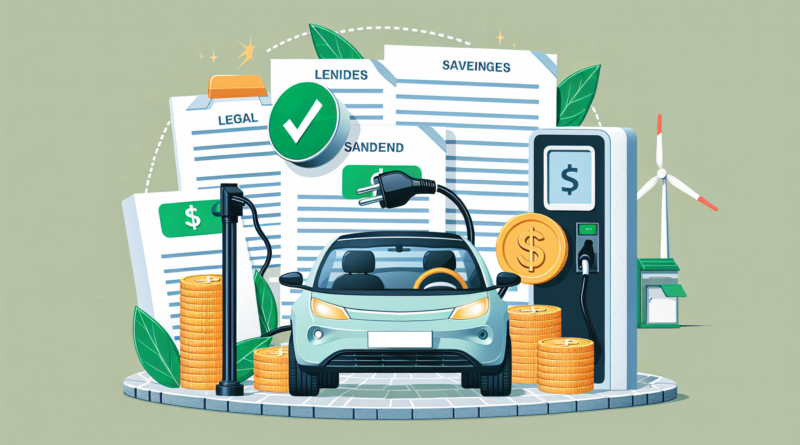Legal Standards & Financial Benefits of EV Subsidies
Electric Vehicle (EV) subsidies are financial incentives provided by governments to encourage the adoption of electric vehicles. These subsidies aim to reduce the initial cost of EVs, making them more accessible to the general public. By lowering the financial barrier, governments hope to accelerate the transition from traditional internal combustion engine vehicles to cleaner, more sustainable electric alternatives.
Legal Frameworks Governing EV Subsidies
The legal standards for EV subsidies vary across different regions, but they generally include specific eligibility criteria that vehicles and buyers must meet. These criteria often encompass vehicle type, battery capacity, and emissions standards. For instance, in the United States, the federal government provides tax credits for EVs, which are contingent upon the vehicle’s battery size and the manufacturer’s sales volume. Similarly, the European Union has set stringent emissions targets that member states must adhere to, incentivizing the adoption of EVs through various subsidy programs.
Key Legal Considerations
1. **Eligibility Criteria:** Vehicles must meet specific standards regarding emissions and battery capacity.
2. **Compliance:** Manufacturers must comply with regional emissions targets to qualify for subsidies.
3. **Documentation:** Buyers often need to provide proof of purchase and vehicle registration to claim subsidies.
The financial benefits of EV subsidies extend beyond the immediate cost reduction for consumers. By making EVs more affordable, subsidies help increase market demand, which in turn encourages manufacturers to invest in research and development. This investment leads to technological advancements and economies of scale, further reducing the cost of EVs over time. Additionally, the widespread adoption of EVs contributes to significant environmental benefits, such as reduced greenhouse gas emissions and improved air quality.
Economic Impact on Consumers and Manufacturers
For consumers, the primary financial benefit of EV subsidies is the reduced purchase price of electric vehicles. This reduction can be substantial, often amounting to thousands of dollars, depending on the region and specific subsidy program. For manufacturers, increased demand for EVs can lead to higher production volumes, which can lower manufacturing costs and increase profitability. Moreover, companies that invest in EV technology may benefit from additional government incentives, such as grants for research and development or tax breaks for sustainable practices.
Long-term Economic Benefits
1. **Cost Savings:** Reduced fuel and maintenance costs for consumers.
2. **Job Creation:** Growth in the EV sector can lead to new job opportunities in manufacturing and infrastructure development.
3. **Innovation:** Encourages technological advancements in battery technology and sustainable energy solutions.
Despite the clear benefits, there are challenges associated with implementing EV subsidies. One major concern is the potential for market distortion, where subsidies may favor certain manufacturers or vehicle types over others. Additionally, the long-term sustainability of subsidy programs is a concern, as they require significant government funding. Policymakers must carefully design subsidy programs to ensure they are equitable, effective, and financially sustainable.
Future Outlook for EV Subsidies
As the global push for sustainability continues, the future of EV subsidies looks promising. Governments worldwide are likely to maintain or even expand subsidy programs to meet ambitious climate goals. However, the focus may shift towards supporting infrastructure development, such as charging stations, to complement the growth in EV adoption. Additionally, as the cost of EVs continues to decrease, subsidies may gradually phase out, allowing the market to sustain itself without government intervention.
Strategic Recommendations
1. **Balanced Approach:** Ensure subsidies are evenly distributed across different vehicle types and manufacturers.
2. **Infrastructure Investment:** Prioritize funding for charging infrastructure to support EV growth.
3. **Sustainability:** Develop long-term plans to transition from subsidies to market-driven growth.
By understanding the legal standards and financial benefits of EV subsidies, stakeholders can make informed decisions that support the transition to a more sustainable transportation future. As the world moves towards cleaner energy solutions, EV subsidies will play a crucial role in shaping the automotive landscape and achieving environmental goals.


